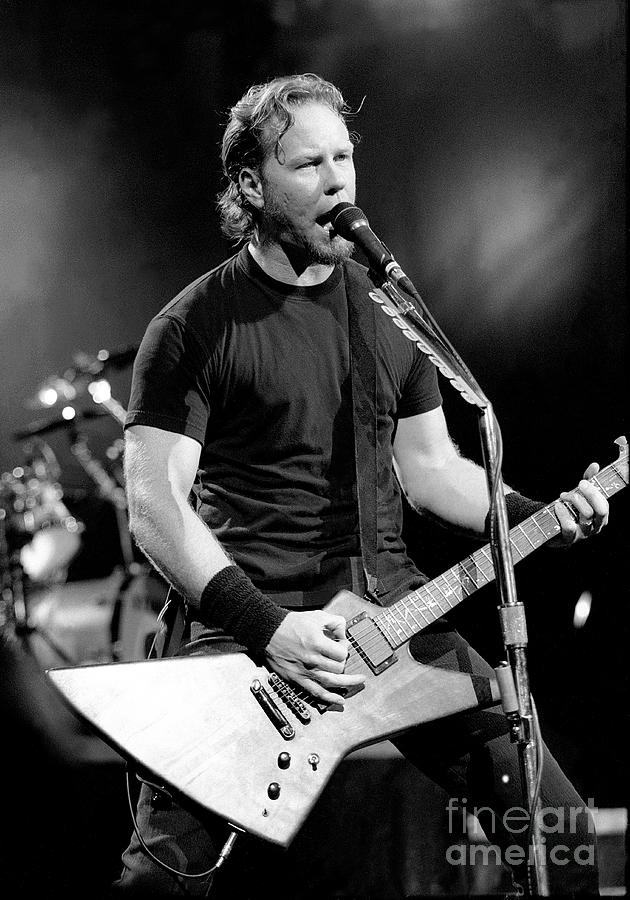James Hetfield is the greatest rhythm guitarist of all time

The best rhythm guitarist of all time is James Hetfield.
Rhythm guitar is sometimes overlooked while discussing the finest guitarists of all time. The one in the back hammering on the riffs seems like a thankless job by comparison, as most people want to get to the guitar gods who like to shred face-melting solos. Naturally, there are many talented musicians that play rhythm guitar, and James Hetfield has all the qualities of a rhythm virtuoso.
Even though Hetfield doesn’t often take the lead, his guitar solos in many Metallica songs are much more complex than those of the typical guitarist. Following in the footsteps of bands like Black Sabbath and Iron Maiden, Hetfield has made it a practice to write songs that are as intense as possible.
Hetfield simultaneously grew up listening to punk music and gained a great admiration for guitarists like Johnny Ramone. Hetfield built one of the strongest bases in the music industry by fusing the fury of metal with the agility and accuracy of punk rock, performing songs that call for a specific level of proficiency while strumming.
Hetfield essentially plays the drums on guitar instead of the typical plodding riffs, while Lars Ulrich uses a more fill-heavy approach on the kit. Hetfield is like the band’s internal metronome, never letting up on his ferocity, especially on early songs like “No Remorse” and “Creeping Death.”

The way he plays the instrument is what elevates his playing to superhuman endurance. Although most guitarists feel as ease strumming up and down to execute their licks, Hetfield has developed a little compulsive down-picking tendency. Hetfield’s persistent tapping of the string adds intensity to his playing even while the notes remain the same, giving songs like “One” a sound akin to a musical machine gun. This was the birth of metal rhythm guitar, not simply aggressive rock strumming.
Hetfield has also shown the ability to maintain such intensity for extended periods of time. Hetfield would play extended periods of downstrokes that would make other players’ wrists break in half, but Metallica’s compositions usually run far beyond the five-minute mark, unlike his punk predecessors who were known to play their hearts out for two minutes at a time.

Even when he steps back from the band’s more aggressive side, Hetfield’s gift for ballads hasn’t been without its difficulties. Despite the fact that tracks like “Welcome Home (Sanitarium)” and “Fade To Black” are by definition slow songs, Hetfield virtually ever seems to be strumming a chord. Hetfield frequently plays delicate arpeggios, jumping between the strings to make the guitar seem like it’s interpreting a composition composed for piano, as opposed to resorting to the cowboy style of strumming.
Guitar harmonies are another one of Hetfield’s most often overlooked talents. Cliff Burton, the original bassist, taught Hetfield certain tricks that let him create symphonies even though he doesn’t like to solo very frequently. Hetfield excelled much above the student level, combining masterworks like the middle passage of “Master of Puppets” or taking over all the guitars on “Nothing Else Matters,” despite the late bassist’s well-known passion for classical music.

Even though Hetfield sometimes plays solos, his approach is much more identifiable than that of a rhythm guitarist. Consider a song like “Matters,” which isn’t performed by Kirk Hammett. Hetfield’s solo does include a few bluesy motifs, but the main goal is to convey a lot of information in a little amount of time rather than to perform solos that go on forever purely for fun.
But that’s the secret to every decent guitarist. Hetfield wouldn’t allow any of Metallica’s songs get dated, despite the fact that they may appear to go on forever. Though the group has managed to get by with somewhat different material in recent years, nothing can replace the band’s heyday, when Hetfield established the bar for what a decent rhythm guitarist had to be.